4 -10 June 2021
by Marie Guilpin
It is crucial to understand predator-prey interactions to quantify, predict and mitigate the effects of changes in foraging efficiency and energetic return, for example from disturbance from anthropogenic noise. I have started my postdoc on whale-prey interactions with Fleur at NIOZ and UvA last April and this was the first time I joined R.V. Pelagia (and I am sold!). Having moved countries and started this new position, all in the midst of the pandemic, it was a great opportunity to safely return to field work, interact with people and brainstorm together while collecting data. There is nothing quite like being directly in the field to grasp a sense of the study area and its ecosystem.
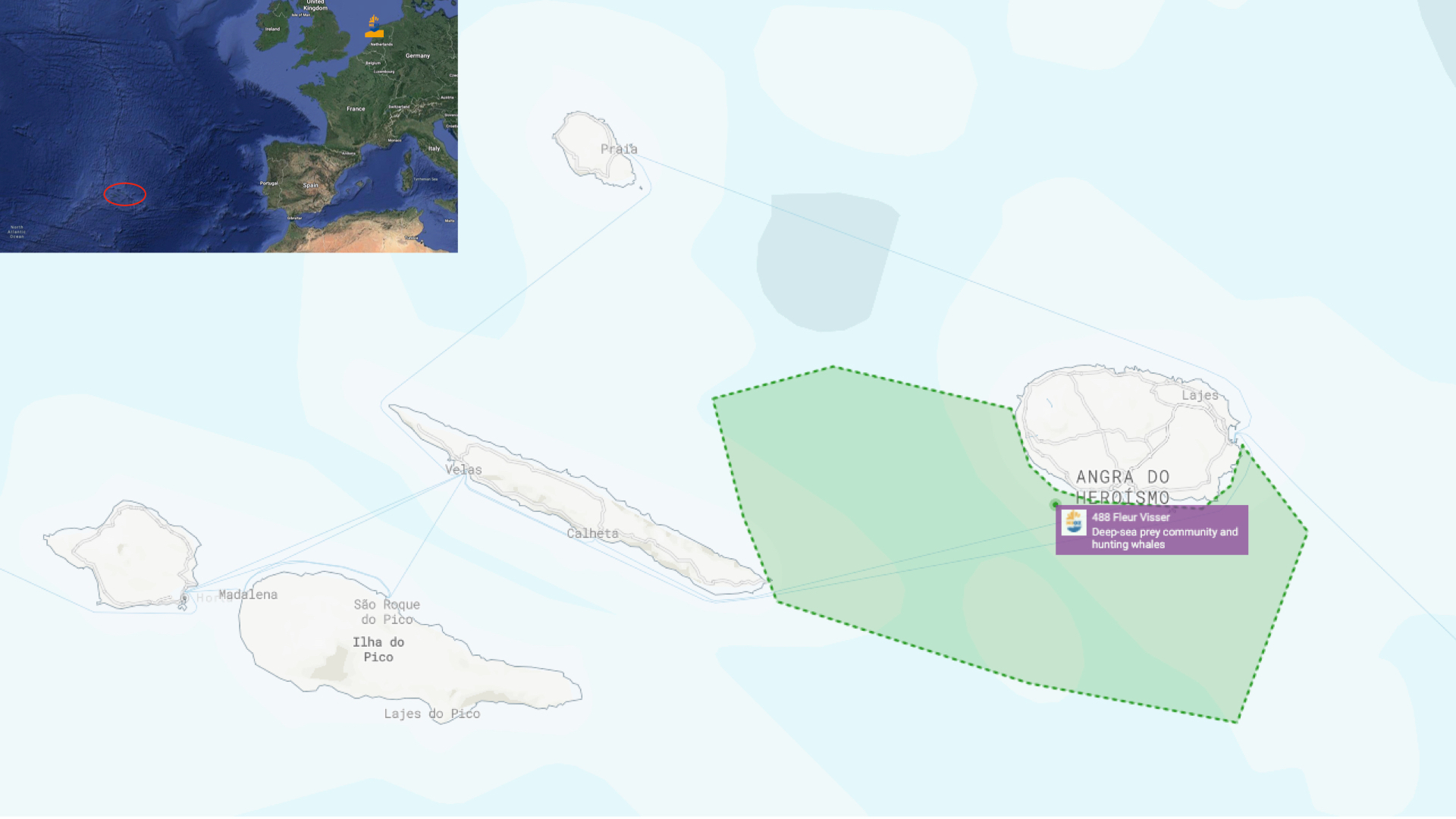
We used a combination of approaches to further characterize deep-sea prey communities in known areas for foraging of deep-diving toothed whales:
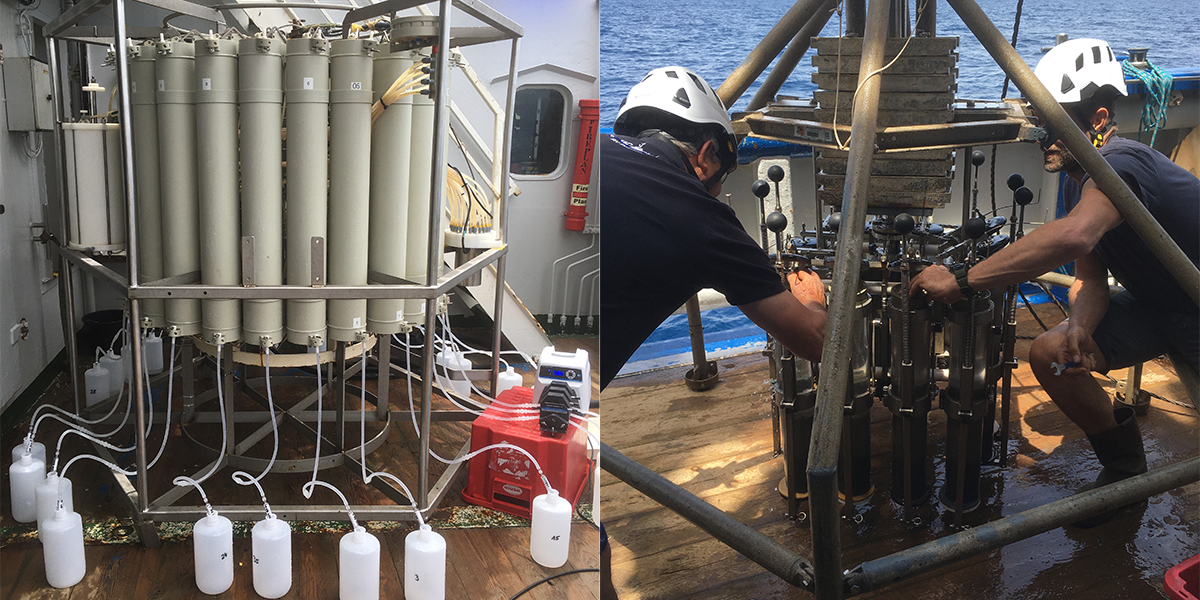
We also used echosounders to sample prey layers characteristics which is the main focus of my project. Data recorded from echosounders document the movement, density and distribution of prey throughout the water column. We aimed for full daily coverage in important habitats, with the echo sounders running nearly 24/7! We recorded key characteristics of the prey layers such as the timing of the upwards and downwards migration, as well as any associated changes in density (see screenshots). In the evening, and around sunset especially, we were curiously following the upwards migration of the prey layers on the echograms, ping after ping from the echosounders, recording the timing and patterns. In the mornings before breakfast, I liked to check the downwards migration of the prey layers from their nighttime excursion. This will be very interesting and valuable data to analyse, and I am excited to dive in!
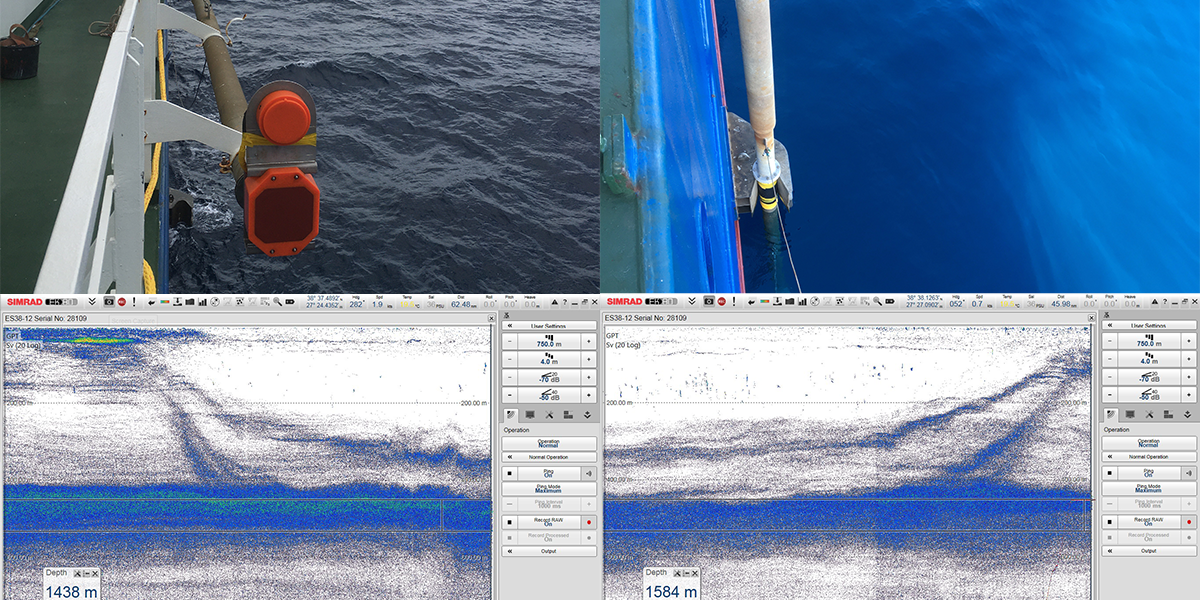
We used the video hopper (top left) for both benthic and pelagic ecosystems. Videos attracted eyes from both the scientific team and the crew and rapidly became an unmissable stop during evenings! Benthic video transects provided exciting records of corals and sponges species much to the delight of Manuela Ramos (OKEANOS/IMAR, UAz) (top right). We also successfully encountered some squids during pelagic dives of the video hopper which was always marked by surprise and rather vocal exclamation “SQUID !!!” to signal the sight to Miguel Guerreiro (GEOMAR), often busy filtering water for eDNA. It has been an interesting game of trial and error, planning for the right time of day and fine-tuning descent and ascent approach strategies to maximize our chances of encountering squid specimen but sightings of individuals such as this squid from the Mastigoteuthis genus makes it all worth it (bottom pictures).
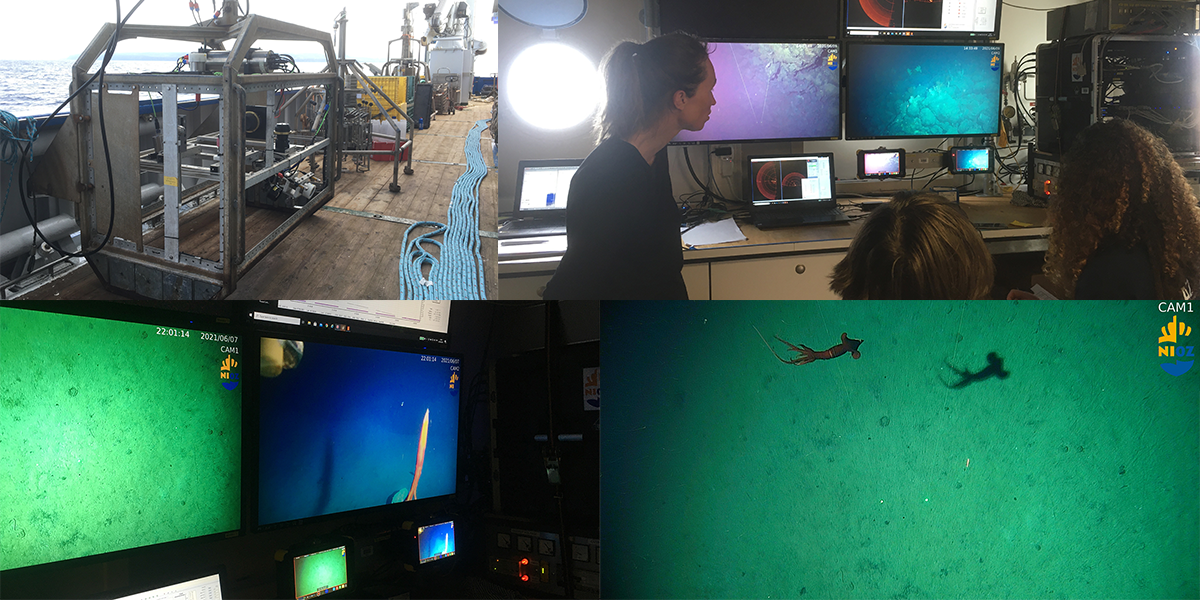
We also deployed a deep-sea mooring equipped with an echosounder (70kHz), hydrophone and oceanographic sampling equipment which will be in place for a complete year (exciting!). This will be particularly useful to record the characteristics and migration patterns of the deep scattering layer between depths of about 1200-900m which are usually too deep to sample from the surface with our echosounders. We are already excited to discover what comes out of it. Bruce Thayre from Scripps Oceanographic Institute meticulously prepared, set up and assembled all the different equipment parts of the mooring (left photos), for a successful deployment (right). We all watched the yellow buoy slowly disappear under the surface once the anchor was dropped, and we are looking forward to searching for it next year when we will release it.
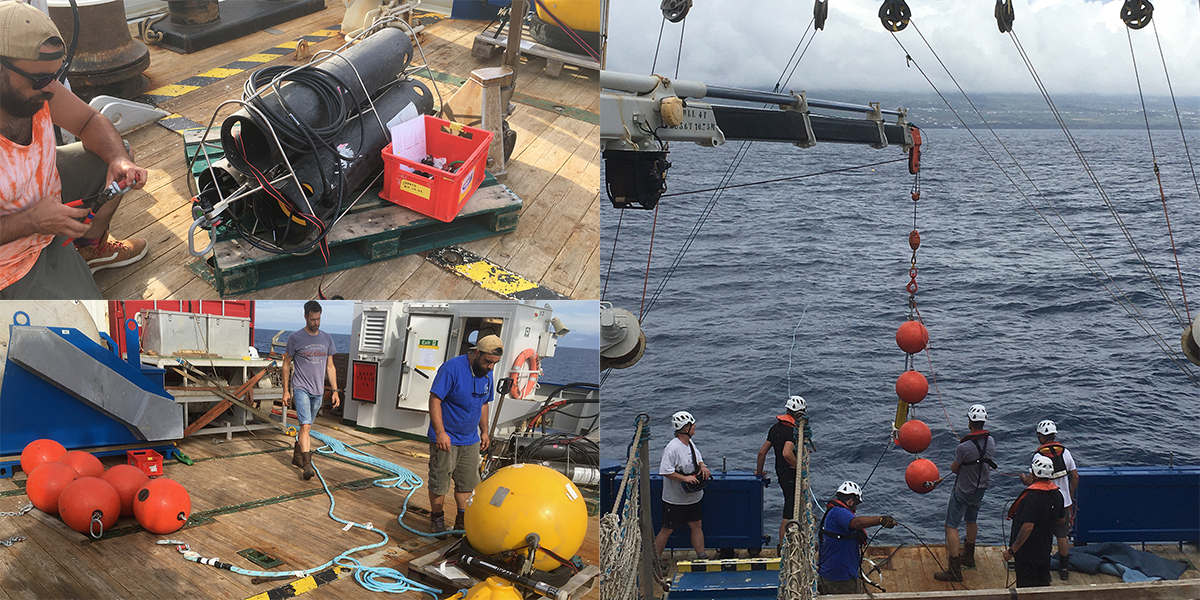
This survey was particularly interesting with the combination of sensors and multidisciplinary approaches used to understand the ecosystem as a whole. The use of different approaches enables our evaluation of how fluctuations in deep-sea prey density and distribution (echo sounder) relate to prey species presence (eDNA), whale foraging activity (on animal sensors, acoustic monitoring) and oceanographic parameters.
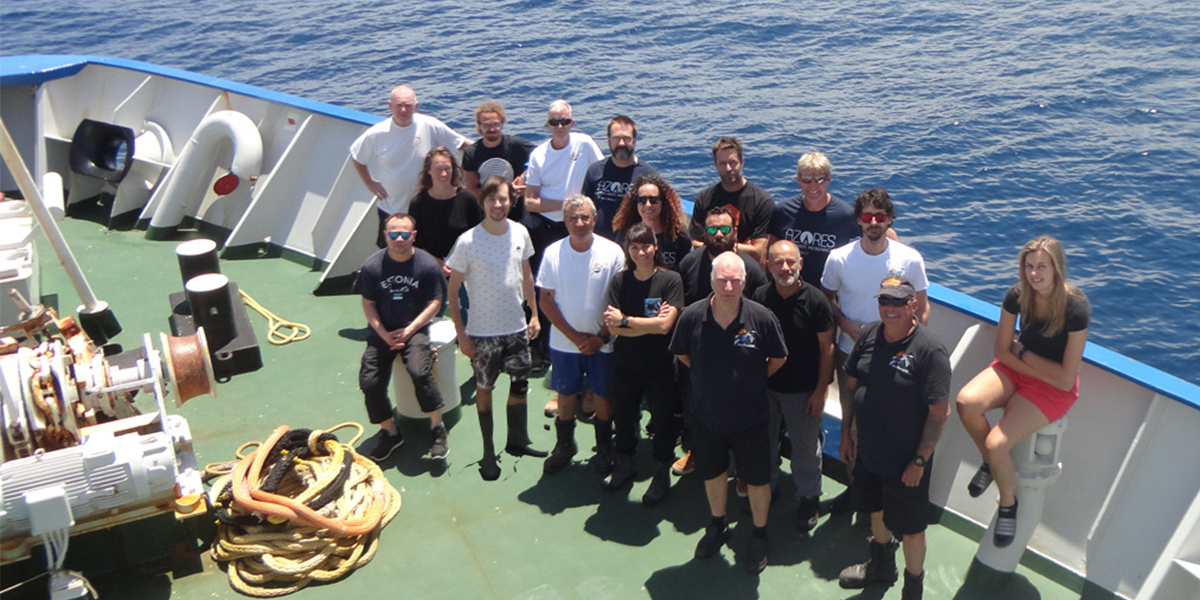
The good weather allowed us to collect good quality data while enjoying beautiful scenery of the coast of Terceira Island. We thank the crew of R.V. Pelagia for the great work and support, delicious food (heerlijk!) and happy spirits throughout the cruise!
Dank je wel en tot ziens Pelagia!
Marie